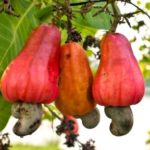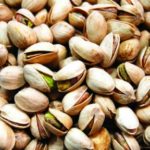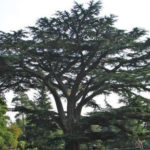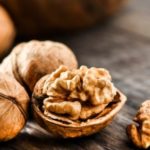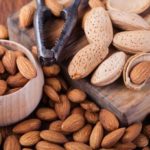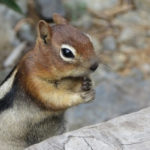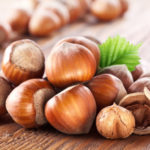Cashew nuts
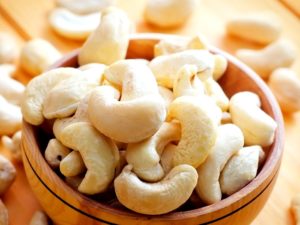 There is probably no person who would not like nuts, whether forest or earth, cedar or walnut, pistachios or almonds. But there is a type of nuts that has not yet gained much popularity among Russians – these are cashew nuts.
There is probably no person who would not like nuts, whether forest or earth, cedar or walnut, pistachios or almonds. But there is a type of nuts that has not yet gained much popularity among Russians – these are cashew nuts.
Those who at least once tried cashews say with confidence that they are worth it.
The original taste, high nutritional value, lack of allergenicity, as well as its healing properties put cashews on the highest place among people like him.
Cashew History
Cashew nuts came to Russia not so long ago, although cashew has been used in food for more than one hundred years in their homeland in Brazil. They are believed to have been discovered by the Chikun Indians; they used all parts of the tree: fruits, leaves, bark, and even roots. And no wonder, because the cashew tree has a lot of useful properties that the Indians knew about. They called these fruits “acaju,” which translates as “yellow fruit.”
And indeed, in many countries where this tree has spread, it is called in its own way. In Latin America, where the Spanish language is adopted, there is the name “maranon”. Somewhere it is called acajuiba, acajaiba, alcayoiba, anacarde, cacajuil, and many more other options, most often anacardium or Indian nut. The Portuguese took root caju which eventually turned into Cashew. But, all in order.
How does cashew grow?
Cashew nuts grow on a tree which is scientifically called the western anacardium, in Latin “Anacardium occidentale”. Often it is also called “Indian nut” or “Akaju.” This is an evergreen tree 10-12 meters tall with a lush, wide-spreading crown, the width of which is equal to or even greater than its height. A natural place of growth is considered Brazil. But at present it is cultivated in more than 30 countries of the world, mainly the countries of Central and South America, India, Southeast Asia, West and Southeast Africa, the Philippines, Malaysia, Indonesia. In the CIS countries, mainly in the south of Azerbaijan. The tree is quite unpretentious, the main thing for it is a warm and humid climate.
The tree grows very quickly, its branches are located quite low from the ground, the crown is dense. The branches of the tree are often irregular in shape, therefore, for the first three to four years, its crown is formed by cutting. The view of Piranzhi has one amazing property. The branches of this tree sinking to the ground begin to sprout roots and not far from the tree itself new sprouts appear which eventually give rise to growth. As a result, the tree can incredibly grow in breadth. In Brazil, near the city of Natal, such a tree planted in 1888 has grown so much that it now occupies about two hectares of land.
Tree description
The leaves of the anacardium are bright green, elliptical or ovoid, covered with shiny skin. The leaf length varies from 4 to 20 cm and a width of 2 to 15 cm. This tree blooms several times a year, in Brazil 2 times, and in India even 3 times a year. Flowers collected in a panicle are yellowish-pink, often with a reddish tinge. The size of the flower petals is from 7 to 15 cm. And the panicle length is about 20-25 cm.
The fruits themselves deserve special attention. In place of the flower, a rather large fruit grows up to 10 centimeters or more in length, similar in shape to a pear or apple of red or yellow color. This fruit is called “cashew apple.” It has a yellow, fibrous, sour-tasting flesh. These apples are quite edible and the local population gladly use them for food, both raw and processed.
Actually, the apple is not the cashew fruit itself. This, as the botanists say, is a “pseudo-fruit” – a receptacle or a receptacle, and simply an overgrown peduncle. And the main fruit is at the bottom of this apple. It is a small nut of a curved shape, dark green, sometimes almost gray. The fruit has two shells. The outer smooth green peel and the inner hard shell with cells are somewhat reminiscent of a honeycomb, inside of which there is the kernel of the nut itself.
And although the nut kernel ready for use weighs only one and a half to two grams, the average yield per hectare is 780 kg. More than three million tons of this nut are being harvested worldwide. Moreover, almost a third of it is received not in their homeland in Brazil, but in Vietnam.
Fresh cashew apples can only be eaten during the first day, as they spoil very quickly, so they cannot be exported. They are processed immediately after harvest. They make excellent juice, compote, jam, jelly, and are used in the preparation of various seasonings. Chutney sauce is prepared from apple juice and Cajuin is a very popular drink in Latin America. And in the Indian province of Goa, Fenny liqueur, a 40-degree alcoholic beverage with a specific aroma and taste, is prepared from fermented fruit juice by distillation.
